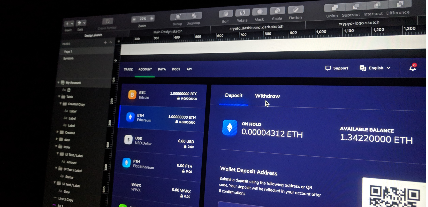Profitable Product Ideas
One of the keys to building a profitable info publishing business is to come up with awesome product ideas. When you do this, you'll find that not only do you find a great idea, you find multiple ideas that you can use for future projects.
This process requires two steps:
- Coming up with potential product ideas.
- Researching these ideas to ensure they’re profitable.
You can’t even get to the second step if you’re stuck on the first step. And that’s why over the next couple pages we’re going to focus on how to come up with all the potential product ideas you need. Take a look…
Quick Tip: Open a text editor or use an app like EverNote so you can copy and paste ideas and links. You need a place to enter all of the data that you find…

Browse Info product Marketplaces
With this method, you come up with product ideas at the same time as you research them. The idea here is to go to marketplaces such as Amazon, ClickBank, JVZoo, Udemy and WarriorPlus to see what’s selling in your niche.
Enter your keywords to refine your search results, or browse through the categories to find what you’re looking for.
When you find books on Amazon, either print or Kindle, there is often a link at the top of the image of the book where it says “Look Inside”. Once you click the link, a new window opens and you can see the chapter headings and the first few pages of the book.
With the other sites, look at the sales pages and see what they are offering. Pay special attention to the bullet points for ideas that you can use for your own product.
Also look to see what bonuses they’re offering. You need to get a feel for what type and how many bonuses are the norm for your niche. And make sure to check out the price of the offer, so you can come up with the price of your own offer.
Next…

Read Product Reviews
While you’re still in the marketplaces (like Amazon), take time to read the product reviews on popular products. Many times, the audience will share ideas of what they would have liked to have seen inside a product, and each of these ideas can then become a potential product idea for you.
Check Out Your Competitors’ Content
Not only should you see what your competitors are selling on their websites, but you’ll also want to check what they’re writing about on their blogs, in their newsletters, and on their social media pages. Don’t forget to also check out their videos (especially on YouTube) as well as their webinars.
Use Keyword Tools
Still another way to generate product ideas is by using keyword tools, and then enter in your broad keywords (like “weight loss” or “gardening”), and the tool will return a list of related phrases your market is typing into search engines.
For example, if you’re searching for online marketing, you might discover that people are looking for “tips for picking a niche” – that’s a potential product idea for you.
Keywordseverywhere.com is where you can download the free browser add-on for Firefox and Chrome. The results are displayed on the search page every time you enter a keyword. Being free, the data is limited to keywords without search numbers. You can buy credits to get this info. You get 100,000 credits for $10, so it is an affordable option.
Ubersuggest is another keyword tool that has a free version that is limited but is very effective, and a paid option that starts out at $29 a month.
Check Your Existing Content

If you’ve been working in your niche for a while, then you already have content on your blog, in your newsletter archives, on social media and perhaps elsewhere. It’s time to check your traffic logs, shares and other activity to see what’s popular.
For example, if you have an article with ten tips on your blog, you could expand each of those ten tips to create a new report.
Another idea: think about how you can combine multiple popular pieces of content to create something new. For example, if your traffic generation articles about Facebook advertising, Facebook groups, and creating Facebook pages are all really popular, that may give you an idea to create a definitive guide to generating traffic on Facebook (both free and paid).
See What Your Market is Asking
You can start by checking your own inbox to see what sort of questions people ask you in your niche. If you have a community (such as a forum or blog), take note of what questions come up repeatedly in your audience. The answers to these questions may give you ideas for products.
For example, if people on your dieting blog keep asking you the best way to shake off those last stubborn 10 pounds, that may give you an idea for creating a product just for people who are almost to their weight-loss goal, but having troubles crossing the finish line.
Another way to find out what interests your market is to visit question and answer sites such as Quroa.com, Yahoo! Answers, or even JustAnswer.com. Every niche question you see on these sites may potentially give you an idea for a product.
For example, you may see a gardener asking a question such as, “What is the best way to get rid of tomato worms?” This simple question can give you multiple product ideas, including:
A report on how to get rid of tomato worms.
A video designed to help people identify common garden pests and how to get rid of them.
A “recipe book” full of organic gardening sprays that gardeners can use to get rid of various pests.
Point is, don’t limit yourself to just the exact idea you see in the question. Do some brainstorming off the original question, and you’re bound to come up with some additional great ideas!

Ask For Feedback
Another way to come up with potential product ideas is to simply ask your market. This doesn’t have to be a formal survey (though it can be, if that’s what you’d like to do). Instead, you can just post on your blog, on your social media pages, and even in your newsletter asking people what they want.
The key here is to ask open-ended questions (no multiple choice) in order to get as many ideas as possible.
E.G.,
- “What is your biggest challenge [in the niche]?”
- What [niche] topic would you like to learn more about?
Now a few parting thoughts…
Conclusion
If you walk through all these steps, you should be able to come up with dozens of potential product ideas. As an added bonus, you can use these same methods to brainstorm up ideas for content to write about in your newsletter!
In both cases, be sure to research your product ideas to ensure your audience wants them.
Work-At-Home Writer Shares His Proven Strategies For Creating Fast Info Products That Sell Consistently And Have Brought Him A Full-Time Income For Over Ten Years! Let Me Show You Here...
